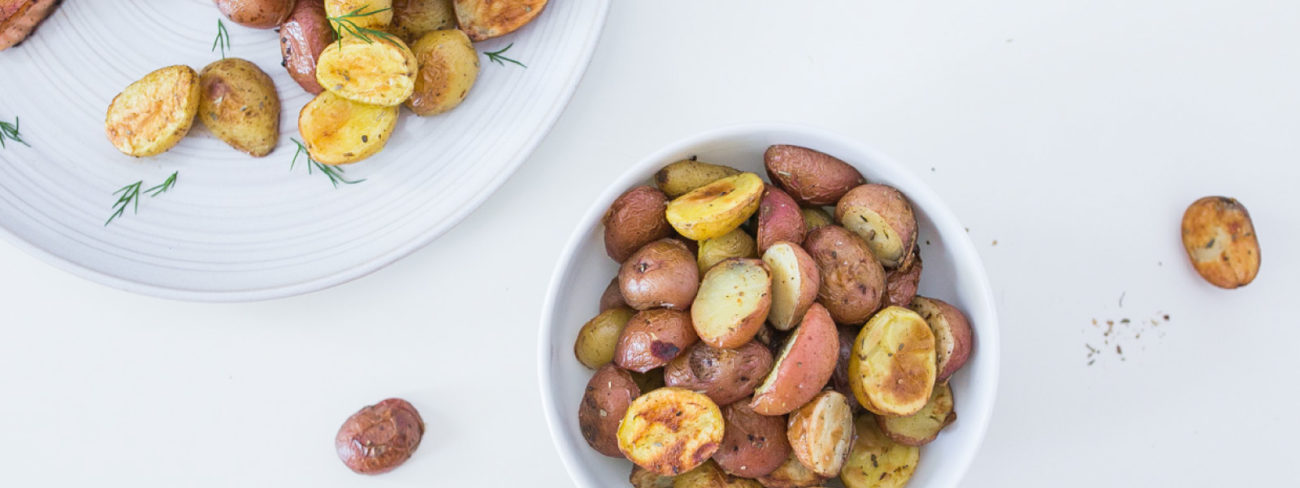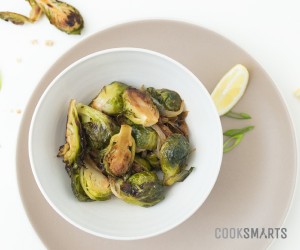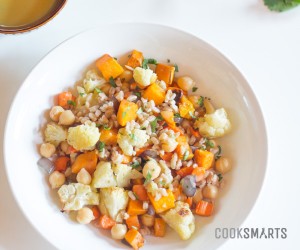The oven is one of the most underutilized tools in the kitchen. While it gets warmed up for baking muffins or cookies, it doesn’t get much action for general everyday mealtime making. However, roasting veggies in the oven can draw out the natural sweetness of veggies with very low effort.
Roasting vs. Baking
Roasting and baking seem to be used interchangeably, so let’s differentiate between the two of them first. Both baking and roasting call for oven use and is a cooking method that uses dry heat cooking – instead of food being cooked directly on a heat source, the hot air circulates around the food, cooking it all on sides. Roasting, however, usually involves cooking foods that start off with a solid structure (meats and veggies), whereas baking involves foods that don’t have structure and then become solid as they cook (cakes and muffins).
Another way to differentiate roasting from baking is that roasting requires a higher temperature (400F / 204C degrees and up) to create the beautiful caramelization you get when you cook foods at high temps. Baking usually happens at lower oven temps (up to 375F / 190C degrees).
We do a lot of roasting, especially for veggies, and here are the reasons why this cooking formula is used a lot in our kitchen:
- Roasting creates caramelization, which enhances food’s natural sweetness and flavors. Plus, it adds a nice crispy texture.
- While roasting does take a bit longer than other methods of cooking, it’s also mostly passive, out-of-the-way cooking. You can prep and season while your oven is warming up, and then you’re done. While you’re waiting, you can prepare other dishes on the stovetop or take advantage of the roasting time to hang out with your family. Just remember to put a timer on (although you’ll certainly smell the goodness)!
- For veggies, roasting time can be adjusted. If you’re short on time, you can chop your veggies into smaller pieces or cook them for a couple of minutes in the microwave first, and then finish them in the oven to get that roasted flavor.
- Flavor profiles are endless. While all you need is olive oil, salt, and pepper, you can get fancy with an endless array of possibilities by adding spices, tossing them in a vinaigrette, or adding some fresh herbs at the end.
- If you don’t like doing the dishes (because who does?), you can avoid dishwashing by covering your baking sheet / roasting pan with aluminum foil or parchment paper!

How to Roast Veggies
We use super high temperatures to roast veggies quickly, making it perfect for any weeknight dinner.
How to Roast Vegetables with Different Flavors
Learn how to roast veggies and make it fun and different with 3 of our favorite flavor profiles.
Discover the sweet side of food.
The great thing about cooking is that using different methods can create completely different tastes and textures. Say you’re not a fan of sauteed or steamed brussels sprouts. If you try roasting them, you might enjoy them better that way. After all, roasting brussels sweetens them up with the caramelization process, making them less bitter and more enjoyable.
Experiment with your favorite (or even non-favorite) veggies and see how roasting affects their tastes and textures. Here are some of our favorite recipes to get you started:



